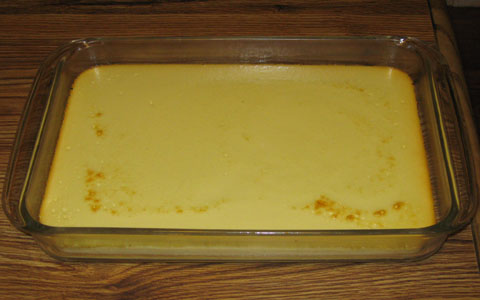|
|
 |
Baked Plain Cheesecake—Prototype 18:
3-Cheese Blend (3CT-1NC-2YG):
Prepare ahead of time 16 ounces of yogurt cheese, derived from one 32-ounce
container of nonfat yogurt. If the resulting yogurt cheese falls below 16
ounces, add back enough of the whey (that was strained out from the yogurt) to
make up the difference. To this yogurt cheese combine 24 ounces of whipped,
lowfat cottage cheese and 8 ounces of softened Neufchatel cheese ("light
cream cheese").
Batter:
1 1/4 cups granulated sugar
40 oz. (5 cups)* 3-cheese blend (see above)
2 teaspoons vanilla
5 eggs
Pour the batter into a greased 13" x 9" glass ("Pyrex") pan
and bake this cheesecake in a hot water tub at 300 degrees for 100 minutes. Then
cool the cheesecake down while still in oven (with this oven shut off) and in
tub with door slightly ajar for an hour. Afterwards, remove pan containing
cheesecake from tub and oven and let cool down at room temperature for another
100 minutes, then (with cheesecake still in pan) refrigerate.
* Find some other use for the roughly 8 ounces of leftover cheese blend—or
otherwise discard (but also see comments below).

|
|

|

